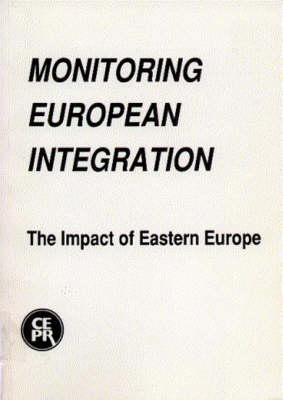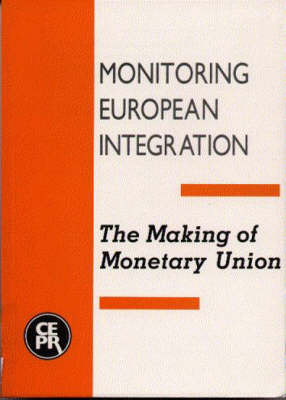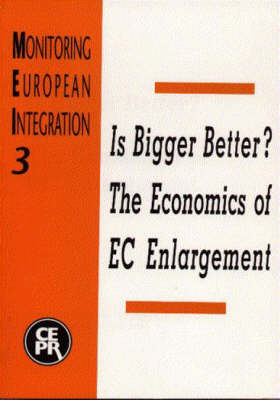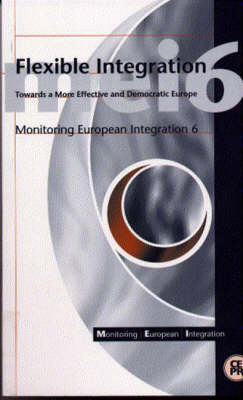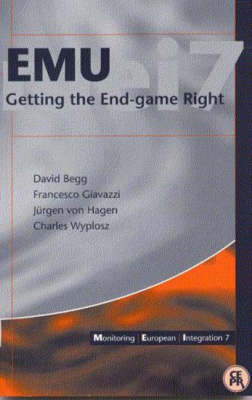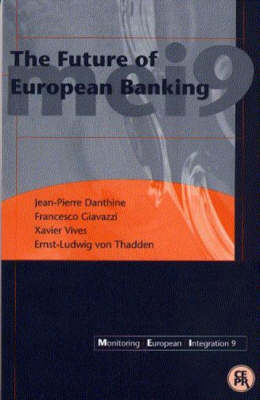Monitoring European Integration S.
7 primary works
Book 1
The Impact of Eastern Europe
by David K.H. Begg, Alasdair Smith, Charles Wyplosz, Carl B. Hamilton, L Alan Winters, Francesco Giavazzi, Victor D. Norman, Andre Sapir, Jean-Pierre Danthine, and Damien J. Neven
Published November 1990
This is the first major study of how developments in Eastern Europe would affect the economies of Western Europe and the process of economic integration among them. The first section focuses on the medium- and long-term implications of the current transformation of Eastern Europe for European production and trade. It also assesses the implications of change in Eastern Europe for EC trade and industrial policies and the likely magnitude of East European trade with the West, given the current state of the capital stock and the potential for industrial restructuring. The Report analyses Eastern exports of energy and agricultural goods, the future of the CAP, and competition between Eastern and Southern Europe. The second section of the Report assesses the medium-term macroeconomic impact of the transformation of the East European economies, focusing on issues such as the consequences of German reunification, East European spending on consumption versus investment, and the likely impact on the EMS of the flows of new investment and capital goods from the West into Eastern Europe. Here the Report assesses the implications of reform in the East for interest rates, pressures for DM realignment, and the case for accelerating EMU in response to the 'Eastern Europe shock'.
Book 2
The Making of Monetary Union
by David K.H. Begg, Charles Wyplosz, Luigi Spaventa, Francesco Giavazzi, Pierre-Andre Chiappori, Xavier Vives, Damien J. Neven, and C.P. Mayer
Published October 1991
This Report examines the monetary unification of Europe and the creation of a European Central Bank. It deals first with the macroeconomics of monetary union and highlights four issues. What monetary constitution is required to deliver price stability, and do the draft statutes of the European Central Bank (ECB) meet these conditions? Are fiscal rules a necessary adjunct to such a constitution? Is convergence of inflation rates a precondition for embarking on monetary union? Finally, how should the transition be managed?
Book 3
Is Bigger Better?
by David K.H. Begg, Anthony J. Venables, L Alan Winters, Manfred J. M. Neumann, Victor D. Norman, Jean-Pierre Danthine, Richard Baldwin, Vittorio Grilli, and Jan Haaland
Published October 1992
This Report examines the enlargement of the European Community to include the EFTA members and the Central and East European Countries (CEECs). It considers first the significant economic benefits to the EFTA countries of concluding the EEA Agreement and their political and economic motivations for applying for full EC membership. The Report assesses the migration potential of CEEC workers and proposes steps to ease such pressures. Finally, the Report considers the implications of enlargement for the Community's institutions. The 'threshold level' of the number of Community members for the efficient operation of its decision-making bodies has already been reached, so further widening cannot proceed without further deepening.
Book 4
Making Sense of Subsidiarity
by David K.H. Begg, Charles Wyplosz, Anthony J. Venables, Jeremy Edwards, Hans-Werner Sinn, Jean-Pierre Danthine, Vittorio Grilli, Damien J. Neven, Paul Seabright, and Jacques Cremer
Published November 1993
Making Sense of Subsidiarity goes right to the heart of many of the tensions now facing the EU. The principle articulates a presumption that the powers of EU institutions should be limited to those that cannot be adequately performed by its member states. This Report argues that until detailed arguments for and against centralization are made, the principle remains an incomplete guide to decisions as to where power should reside. Sections cover: labour mobility and its implications for the centralization of income tax and social security; economic integration and the Social Chapter; fiscal policy, macroeconomic stabilization and the Maastricht rules; environmental policy; merger policy; and European agriculture.
Book 6
Flexible Integration
by Francesco Giavazzi, Torsten Persson, Andre Sapir, Guido Tabellini, Mathias Dewatripont, Jurgen von Hagen, Gerard Roland, and Ian Harden
Published 25 October 1995
The European Union faces difficult challenges: to go on with further enlargement; to reconcile radically different views on the appropriate scope and depth of integration; and to close the democratic deficit and revive public support for the Union. Written by a distinguished team of academics from six countries to inform public opinion before the 1996 Intergovernmental Conference, CEPR's sixth Monitoring European Integration Report argues for significant economic, political and legal reforms of the Union to meet these challenges. Flexible Integration is a model of reform designed to overcome the current stalemate between federalists and anti-federalists. It introduces more flexibility to accommodate the heterogeneous interests in Europe without risking the gains achieved through past integration. Flexible integration combines firm commitment by all members to a common supranational common base - including a well-defined set of competences related to the Single Market - with optional integration in other areas through open partnerships. Within these ramifications, the report discusses a number of specific reforms, including: how to introduce a hierarchy of European Law, making the Union's legal structure more flexible and transparent; how to improve enforcement of the Single Market, realising the vision underlying the four freedoms; how to achieve macroeconomic coordination without the tarnished exchange rate mechanism, while accommodating the different views on the single currency; and how to make political decision-making more efficient and legitimate, representing and balancing different European interests and making decision-makers more directly accountable to the citizens of Europe.
Book 7
EMU
by David K.H. Begg, Charles Wyplosz, Francesco Giavazzi, and Jurgen von Hagen
Published March 1997
By spring 1998, an agreement must be reached on the first group of European countries to participate in the economic and monetary union (EMU). If all goes according to plan, EMU itself will begin on January 1, 1999. Written by a team of distinguished European academics, this report looks at this final stage of the transition to monetary union. The authors consider whether the current ERM rule should continue to operate between the announcement and the start of EMU. They also assess when the new exchange rate system (EMS-2) designed to link " ins" and " pre-ins" should start operating. Their analysis and conclusions will continue to influence the conduct of monetary policy long after the 1998 decision.
Book 9
The Future of European Banking
by Francesco Giavazzi, Jean-Pierre Danthine, Enst-Ludwig Von Thadden, and Xavier Vives
Published 22 February 1999
The European banking industry is in a state of turmoil. The pace of mergers and acquisitions has accelerated across different banking sectors and within the same sector. At the same time, the demise of banks already in trouble has accelerated. This report analyzes what lies behind the historic segmentation of EU financial markets because a clear view about these issues is needed to predict the changes that EMU will bring about. The authors examine the policy implications of these changes and propose measures to address the problems that may be encountered.
